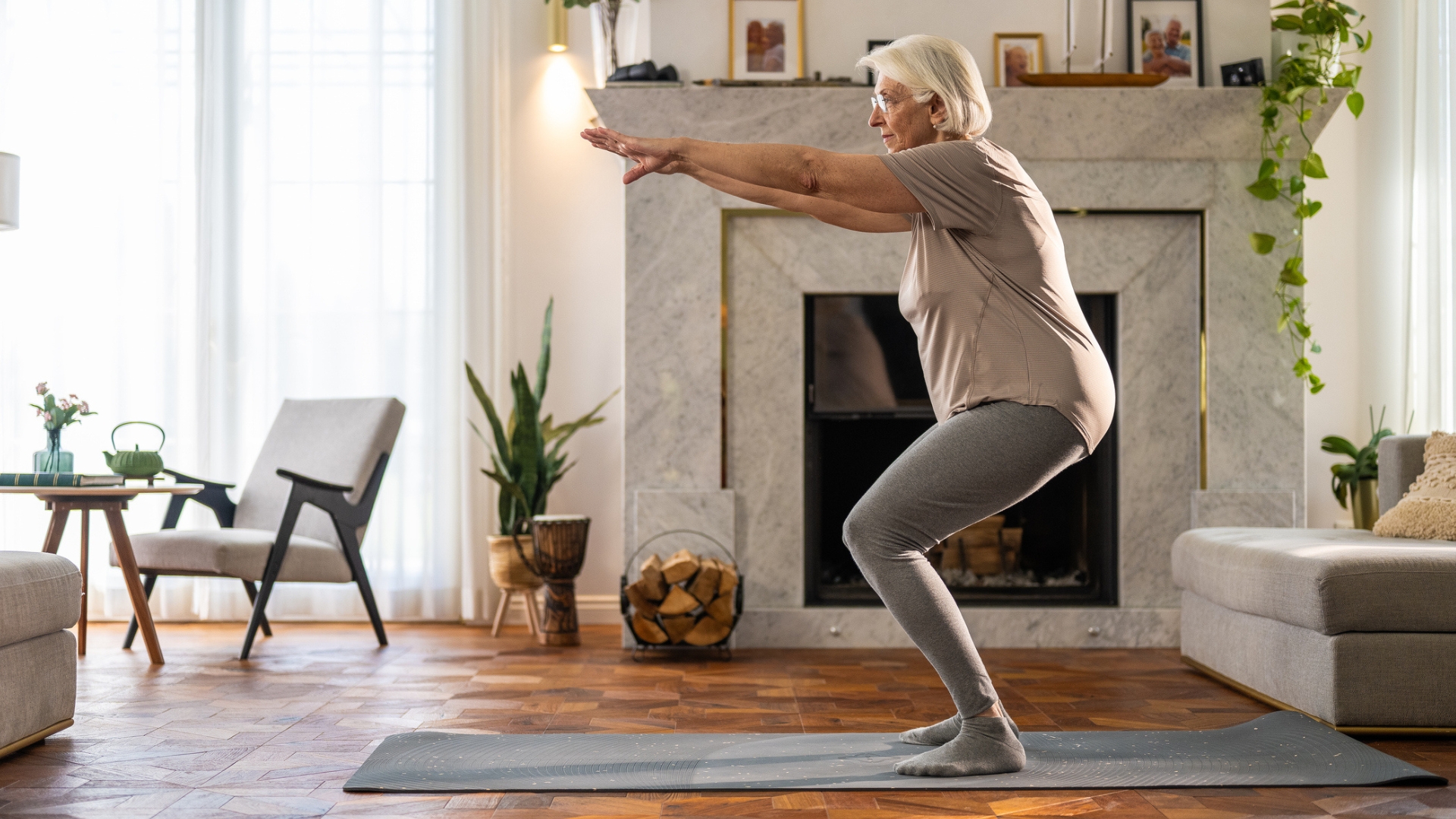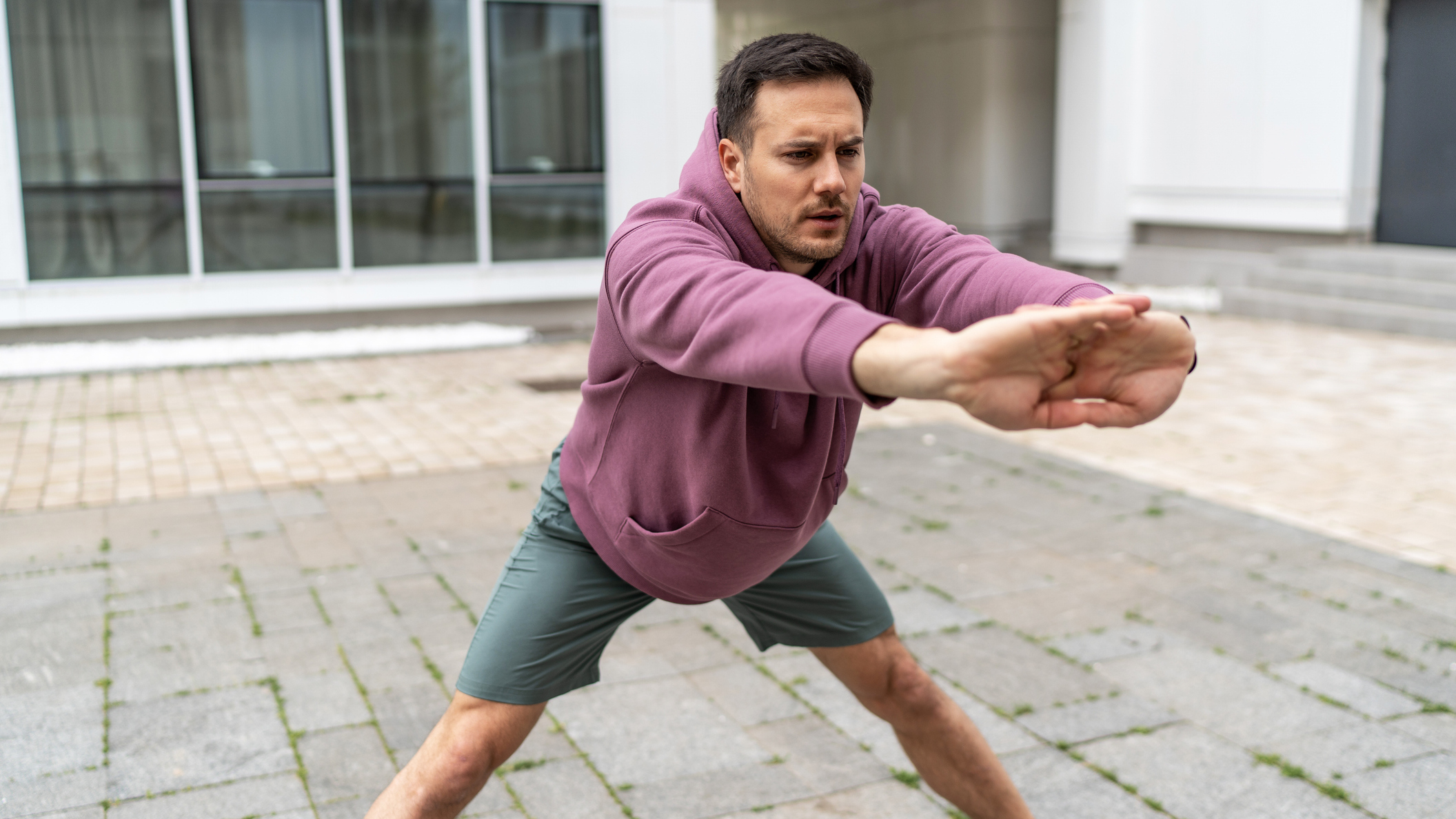New to the gym? Avoid these six bad habits and you'll be fine, says a trainer
Heed this advice to make the most of every workout

Every year millions get swept up in the New Year resolution rush to get in shape.
They sign up to the gym, hoping it will solve their health and fitness needs, only to feel no closer to their goal a month later. My advice: relax, you are not alone—I’ve been there too.
I signed up to my local David Lloyd gym and quickly remembered why a busy Monday night there can be truly bewildering.
Amid the high-tempo house music and clatter of weight plates, one survival mechanism is to simply copy other gym-goers. But do this and you're likely to pick up some bad habits.
So I decided to ask a trainer about the most common pitfalls gym newcomers fall into, and what to do instead so you set yourself up for success.
Here are his top six bad habits everyone should avoid.
1. Doing static stretches to warm up
Static stretching is best reserved for the end of a workout to promote recovery, says Jack Claxton, master trainer at David Lloyd Clubs, not in your warm-up. Instead opt for dynamic stretches to increase your heart rate and mobility.
Get the Fit&Well Newsletter
Start your week with achievable workout ideas, health tips and wellbeing advice in your inbox.
Static stretches involve holding a stretch, like standing on one leg and pulling your heel into your glutes to stretch your quad muscle. Dynamic stretching, as the name suggests, involves mobilizing the muscles with movements, like performing bodyweight lunges and squats.
Research published in Sports Medicine has shown that "controlled dynamic stretching" promotes range of motion and performance—including force production, power output, sprint speed and jump height—thanks to reduced stiffness of the muscle-tendon unit and improved temperature and potentiation-related mechanisms.
"Dynamic stretching is also a great way to increase your heart rate at the start of a workout while helping stretch your muscles under load to improve mobility," says Claxton.
Try two to three rounds of this simple dynamic full-body warm-up before your next workout:
- March on the spot for 30sec.
- Tap the floor and reach overhead for 30sec.
- Alternate reverse lunge for 30sec.
- Perform the world's greatest stretch on your left side for 30sec.
- Perform the world's greatest stretch on your right side for 30sec.
2. Using the treadmill to warm up for every workout
Warm-ups, just like goal-setting, should be SMART: specific to the workout you're about to do; measurable rather than aimless; achievable so they don't break you before the main event; relevant to your overall fitness goal; time-bound so you get to the main event without needless delay.
Jumping on the treadmill for five minutes before a HYROX workout, for example, makes sense. A five-minute jog before a Pilates class or upper-body strength session, however, does not.
Claxton suggests tailoring your warm-up to the exercises you'll be doing in your main session. For example, if you’ll be doing dumbbell squats, lunges and hip thrusts, start off with 2-3 sets of bodyweight squats, lunges and hip thrusts.
"My go-to before a lower-body session is the rowing machine and before an upper-body session the SkiErg," says Claxton.
3. Assuming every session needs to last an hour
Think quality over quantity. "It's amazing what you can get done in 30 or 45 minutes if you put your mind to it," says Claxton. To maximize every minute during your workout, he stresses the importance of writing down your plan before you get to the gym and having a back-up for each exercise in case your apparatus is in use.
"Arriving fully prepared will avoid any wasted thinking time," he says. If you're short for time, he adds, sticking to one full-body exercise that works several muscle groups at once while safely maintaining a high intensity will deliver the greatest results. For example, alternating one minute on with one minute off on the rowing machine or SkiErg.
And if you're really short for time? I like to squeeze in a 10-minute core workout from one of my favorite fitness apps like FIIT or WithU. Strengthening these foundations will always benefit general posture, overall strength and spine health.
4. Trying to spot-reduce fat
If belly fat is hiding your washboard abs or excess tissue is building up on the back of your arms, sit-ups and triceps extensions are not the answer—you cannot reduce fat in just one area. Instead, says Claxton, you should try to reduce body fat all over.
How? In broad terms, by reducing your calorie intake so that you're in a slight daily deficit, doing full-body exercises like rowing and dedicating time to resistance training to build muscle, because muscle tissue burns more calories than fat.
Depending on how many workouts you can fit into your week, Claxton suggests doing the following:
- If you can exercise twice a week, do two full-body workouts.
- If you can exercise three days a week, perform a full-body workout, an upper-body workout and a lower-body workout.
- Of if you can manage to fit in four exercise sessions a week, add a cardio and core session to the schedule for three days a week above.
5. Constantly changing your workouts
This is one I'm especially prone to. Consistency really is the name of the game when it comes to seeing results in fitness.
"Stick to your plan, not to your mood," says Claxton. "That will keep your progress on track and ensure you don't cut corners."
That said, not budging from your comfort zone can be self-defeating too.
"If your motivation is on the floor, don't be afraid to try something new," says Claxton. "It's easy to stick with what you know but trying different types of training could help you fall in love with exercise in a new way that will keep you coming back for more."
6. Expecting instant results
While consistency is critical, managing expectations is equally important.
"If you've not been to the gym for a while or you're brand new to it, setting unrealistic goals can be very demotivating," says Claxton.
"Remember, fitness isn't linear. There will be good sessions and bad sessions; good weeks and bad weeks. How you respond to the dips in performance and motivation will determine your results in the long run."
So set realistic goals, draw up a program (even something as simple as committing to exercising every Tuesday and Thursday), stick to the plan and be patient. Trust the process and good things will come.

Sam Rider is an experienced freelance journalist, specialising in health, fitness and wellness. He is also a REPS level 3 qualified personal trainer.
-
 The three Pilates exercises every beginner should start with, according to an expert instructor
The three Pilates exercises every beginner should start with, according to an expert instructorA sequence that will take you no more than 10 minutes
By Alice Porter
-
 Chris Hemsworth swears by something called Foundation Training to keep back injuries at bay—here's how to master one of its core movements
Chris Hemsworth swears by something called Foundation Training to keep back injuries at bay—here's how to master one of its core movementsTime to introduce this into your daily routine
By Sam Rider